The White Motor Company was an American automobile, truck, bus and agricultural tractor manufacturer from 1900 until 1980. The company also produced bicycles, roller skates, automatic lathes, and sewing machines. Before World War II, the company was based in Cleveland, Ohio. White Diesel Engine Division in Springfield, Ohio, manufactured diesel engine generators, which powered U.S. military equipment and infrastructure, namely Army Nike and Air Force Bomarc launch complexes, and other guided missile installations and proving grounds, sections of SAGE and DEW Line stations, radars, Combat Direction Centers and other ground facilities of the U.S. aerospace defense ring, such as the Texas Towers.

The Daimler Company Limited, prior to 1910 The Daimler Motor Company Limited, was an independent British motor vehicle manufacturer founded in London by H. J. Lawson in 1896, which set up its manufacturing base in Coventry. The company bought the right to the use of the Daimler name simultaneously from Gottlieb Daimler and Daimler-Motoren-Gesellschaft of Cannstatt, Germany. After early financial difficulty and a reorganisation of the company in 1904, the Daimler Motor Company was purchased by Birmingham Small Arms Company (BSA) in 1910, which also made cars under its own name before the Second World War. In 1933, BSA bought the Lanchester Motor Company and made it a subsidiary of Daimler Company.
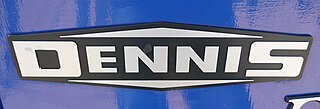
Dennis Specialist Vehicles was an English manufacturer of commercial vehicles based in Guildford, building buses, fire engines, lorries (trucks) and municipal vehicles such as dustcarts. All vehicles were made to order to the customer's requirements and more strongly built than mass production equivalents. For most of the 20th century the Dennis company was Guildford's main employer.
Brush Traction is a manufacturer and maintainer of railway locomotives in Loughborough, England. It is a subsidiary of Wabtec.

The International Harvester Company was an American manufacturer of agricultural and construction equipment, automobiles, commercial trucks, lawn and garden products, household equipment, and more. It was formed from the 1902 merger of McCormick Harvesting Machine Company and Deering Harvester Company and three smaller manufactures: Milwaukee; Plano; and Warder, Bushnell, and Glessner. In the 1980s all divisions were sold off except for International Trucks, which changed its parent company name to Navistar International. Its brands included McCormick, Deering, and later McCormick-Deering, as well as International. Along with the Farmall and Cub Cadet tractors, International was also known for the Scout and Travelall vehicle nameplates.

Fordson was a brand name of tractors and trucks. It was used on a range of mass-produced general-purpose tractors manufactured by Henry Ford & Son Inc from 1917 to 1920, by Ford Motor Company (U.S.) and Ford Motor Company Ltd (U.K.) from 1920 to 1928, and by Ford Motor Company Ltd (U.K.) from 1929 to 1964. The latter also later built trucks and vans under the Fordson brand.

Fairbanks, Morse and Company was an American manufacturing company in the late 19th and early 20th century. Originally a weighing scale manufacturer, it later diversified into pumps, engines, windmills, coffee grinders, radios, farm tractors, feed mills, locomotives, and industrial supplies until it was purchased by Penn Texas in 1958.

Herbert Akroyd-Stuart was an English inventor who is noted for his invention of the hot bulb engine, or heavy oil engine.

Fageol Motors was a United States manufacturer of buses, trucks and farm tractors.
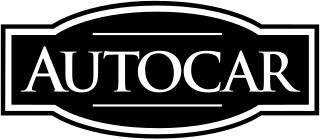
The Autocar Company is an American specialist manufacturer of severe-duty, Class 7 and Class 8 vocational trucks, with its headquarters in Birmingham, Alabama. Started in 1897 in Pittsburgh, Pennsylvania, as a manufacturer of Brass Era automobiles, and trucks from 1899, Autocar is the oldest surviving motor vehicle brand in the Western Hemisphere.
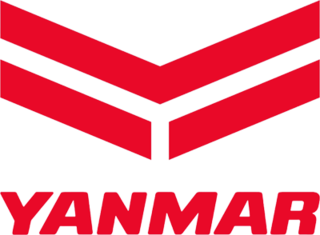
Yanmar Co., Ltd. is a Japanese diesel engine, heavy machinery and agricultural machinery manufacturer founded in Osaka, Japan in 1912. Yanmar manufactures and sells engines used in a wide range of applications, including seagoing vessels, pleasure boats, construction equipment, agricultural equipment and generator sets. It also manufactures and sells, climate control systems, and aquafarming systems, in addition to providing a range of remote monitoring services.
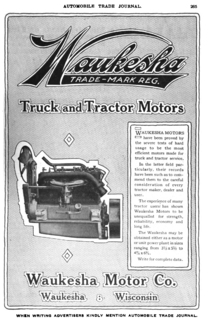
Waukesha is a brand of large stationary reciprocating engines produced by INNIO Waukesha Gas Engines, a business unit of the INNIO Group. For 62 years, Waukesha was an independent supplier of gasoline engines, diesel engines, multifuel engines (gasoline/kerosene/ethanol), and LNG/propane engines to many truck, tractor, heavy equipment, automobile, boat, ship, and engine-generator manufacturers. In 1906, the Waukesha Motor Company was founded in Waukesha, Wisconsin. In 1957, Waukesha bought the Climax Engineering Co. of Clinton, Iowa, also a noted builder of large engines. In 1968, Waukesha Motor Company was acquired by the Bangor-Punta Corporation. In 1973, Waukesha sold the Climax division to the Arrow Engine Company. In 1974, Waukesha Motor Company was sold to Dresser Industries and became Dresser's Waukesha Engine Division; its typical nicknames afterward were Waukesha Engine and Dresser Waukesha. In 1989, Dresser acquired the Brons company of the Netherlands. In 2010, Dresser, including Dresser Waukesha, was acquired by GE Energy. On January 20, 2014, Barack Obama visited the plant where he gave a speech on increasing the minimum wage to $10.10 an hour. He also discussed wage equality for women. Afterwards he took a tour of the plant. On September 28, 2015, GE announced it was closing the plant for good and moving the engine manufacturing operations to Canada. In November 2018 INNIO announced that Advent International has completed the acquisition of GE’s Distributed Power business, being a stand-alone energy company rebranded as INNIO. The transaction included the Jenbacher and Waukesha product lines, the digital platform and related services offerings, with main operating sites in Austria, Canada and the United States. Since July 2019 the Waukesha and Jenbacher business units service their segments and customers around the world as independent entities under the INNIO umbrella brand.

The hot-bulb engine is a type of internal combustion engine in which fuel ignites by coming in contact with a red-hot metal surface inside a bulb, followed by the introduction of air (oxygen) compressed into the hot-bulb chamber by the rising piston. There is some ignition when the fuel is introduced, but it quickly uses up the available oxygen in the bulb. Vigorous ignition takes place only when sufficient oxygen is supplied to the hot-bulb chamber on the compression stroke of the engine.

David Roberts was the Chief Engineer and managing director of Richard Hornsby & Sons in the early 1900s. His invention, the caterpillar track, was demonstrated to the army in 1907.

The Caldwell Vale Truck & Bus Co. was an Australian automobile, bus, truck and tractor manufacturer from 1907 to 1913 in the Sydney suburb of Auburn. The company started in 1907 when Felix Caldwell and Norman Laurie Caldwell of South Australia filed for a patent covering "Improvements in and connected with driving and steering motor propelled vehicles". In short, the patent was for a four-wheel-drive system with four-wheel-steering. Later they combined with Henry Vale of New South Wales and in 1910, the trio applied for a patent covering "Improved power steering gear for heavy motor driven road vehicles". Few technical details have survived about the marque and roughly 40 examples of the vehicles appear to have been made. A touring car, it is known to have had four-wheel drive, a 30 hp six-cylinder engine and four-wheel steering. The company also built a fair tractors. In 1912–13, the company lost a court case to do with the performance guarantee of the trucks and was taken over by Purcell Engineering in 1916.

A & G Price was an engineering firm and locomotive manufacturer in Thames, New Zealand, from 1868. A few months short of 150 years after it was founded its then owner was put into liquidation on 26 July 2017. About 100 employees lost their jobs.

The Oliver Farm Equipment Company was an American farm equipment manufacturer from the 20th century. It was formed as a result of a 1929 merger of four companies: the American Seeding Machine Company of Richmond, Indiana; Oliver Chilled Plow Works of South Bend, Indiana; Hart-Parr Tractor Company of Charles City, Iowa; and Nichols and Shepard Company of Battle Creek, Michigan.
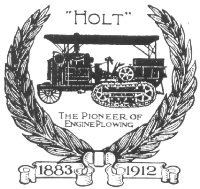
The Holt Manufacturing Company began with the 1883 founding of Stockton Wheel Service in Stockton, California, United States. Benjamin Holt, later credited with patenting the first workable crawler ("caterpillar") tractor design, incorporated the Holt Manufacturing Company in 1892. Holt Manufacturing Company was the first company to successfully manufacture a continuous track tractor By the early 20th century, Holt Manufacturing Company was the leading manufacturer of combine harvesters in the US, and the leading California-based manufacturer of steam traction engines.
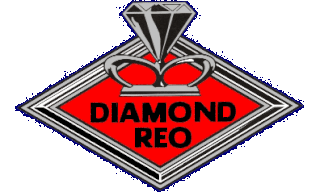
Diamond Reo Trucks was an American truck manufacturer. In 1967, Diamond T and Reo Trucks were combined to form the Diamond Reo Trucks Division of the White Motor Corporation. Reo dated back to 1904 when Ransom E. Olds, founder of Oldsmobile, began building motor cars, and Diamond T dated back to 1905 when C.A. Tilt began building vehicles.

Perkins Engines Company Limited, a subsidiary of Caterpillar Inc since 1998, is primarily a diesel engine manufacturer for several markets including agricultural, construction, material handling, power generation and industrial. It was established in Peterborough, England, in 1932. Over the years Perkins has expanded its engine ranges and produces thousands of different engine specifications including diesel and petrol engines.





















